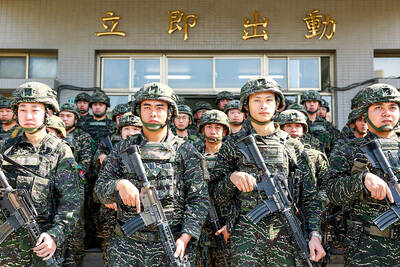After nearly a year's search, the management of the Taipei Symphony Orchestra (TSO) has finally announced the appointment of a Music Director Designate. It's the 55-year-old German conductor Martin Fischer-Dieskau.
This is a major coup for the TSO, sometimes perceived these days as the little sister of the bigger National Symphony Orchestra (NSO), even though its budget is said to be the larger.
Ever since Felix Chen Chiu-sen (陳秋盛) resigned after two decades as Music Director in extremely controversial circumstances in 2003, the TSO has often appeared to lack direction, in contrast to the ever-increasing repute of the NSO under Chien Wen-pin (簡文彬). This new appointment, however, could alter things dramatically.

PHOTO: COURTESY OF THE TSO
It should be remembered that the TSO was once the leading Taiwanese orchestra, mounting twice-yearly opera productions at the National Theater - a role that abruptly ended with Chen's tragic departure.
Martin Fischer-Dieskau, son of the famous baritone Dietrich Fischer-Dieskau and cellist Irmgard Poppen, has already announced that his aim is to transform the TSO into a first-tier orchestra that can take its place on the international stage. This will be no easy task, you might think, after its four years in the relative doldrums.
But Fischer-Dieskau has a record of tough decision-making, notably during his tenure as Artistic Director of the Kitchener-Waterloo Symphony Orchestra in Ontario, Canada from 2001 to 2003. There he was engaged in a prolonged dispute with the orchestra's administrators that culminated in the mass resignation of the board of management.
The appointment comes hot on the heels of the NSO's announcement that Gunther Herbig will be its Artistic Advisor and Principal Guest Conductor for the 2008 to 2010 seasons.
Both orchestras, it would appear, are testing the waters with caution. But at the same time, both have made strong and courageous decisions, selecting high-profile figures from the international music scene. With the Evergreen Symphony Orchestra having appointed yet another German conductor, Gernot Schmalfuss, as its director, the stage appears to be set for a contest of the Titans, with the Taiwan classical music scene for the time being dominated by German-speaking music directors with, you can be sure, very high musical standards. This can only benefit the already highly accomplished professional music scene here.
Martin Fischer-Dieskau will conduct four concerts and one opera for the TSO this year, and in addition help with future planning. If all goes well he will be appointed Music Director from the beginning of 2009.

That US assistance was a model for Taiwan’s spectacular development success was early recognized by policymakers and analysts. In a report to the US Congress for the fiscal year 1962, former President John F. Kennedy noted Taiwan’s “rapid economic growth,” was “producing a substantial net gain in living.” Kennedy had a stake in Taiwan’s achievements and the US’ official development assistance (ODA) in general: In September 1961, his entreaty to make the 1960s a “decade of development,” and an accompanying proposal for dedicated legislation to this end, had been formalized by congressional passage of the Foreign Assistance Act. Two

Despite the intense sunshine, we were hardly breaking a sweat as we cruised along the flat, dedicated bike lane, well protected from the heat by a canopy of trees. The electric assist on the bikes likely made a difference, too. Far removed from the bustle and noise of the Taichung traffic, we admired the serene rural scenery, making our way over rivers, alongside rice paddies and through pear orchards. Our route for the day covered two bike paths that connect in Fengyuan District (豐原) and are best done together. The Hou-Feng Bike Path (后豐鐵馬道) runs southward from Houli District (后里) while the

March 31 to April 6 On May 13, 1950, National Taiwan University Hospital otolaryngologist Su You-peng (蘇友鵬) was summoned to the director’s office. He thought someone had complained about him practicing the violin at night, but when he entered the room, he knew something was terribly wrong. He saw several burly men who appeared to be government secret agents, and three other resident doctors: internist Hsu Chiang (許強), dermatologist Hu Pao-chen (胡寶珍) and ophthalmologist Hu Hsin-lin (胡鑫麟). They were handcuffed, herded onto two jeeps and taken to the Secrecy Bureau (保密局) for questioning. Su was still in his doctor’s robes at

President William Lai’s (賴清德) March 13 national security speech marked a turning point. He signaled that the government was finally getting serious about a whole-of-society approach to defending the nation. The presidential office summarized his speech succinctly: “President Lai introduced 17 major strategies to respond to five major national security and united front threats Taiwan now faces: China’s threat to national sovereignty, its threats from infiltration and espionage activities targeting Taiwan’s military, its threats aimed at obscuring the national identity of the people of Taiwan, its threats from united front infiltration into Taiwanese society through cross-strait exchanges, and its threats from